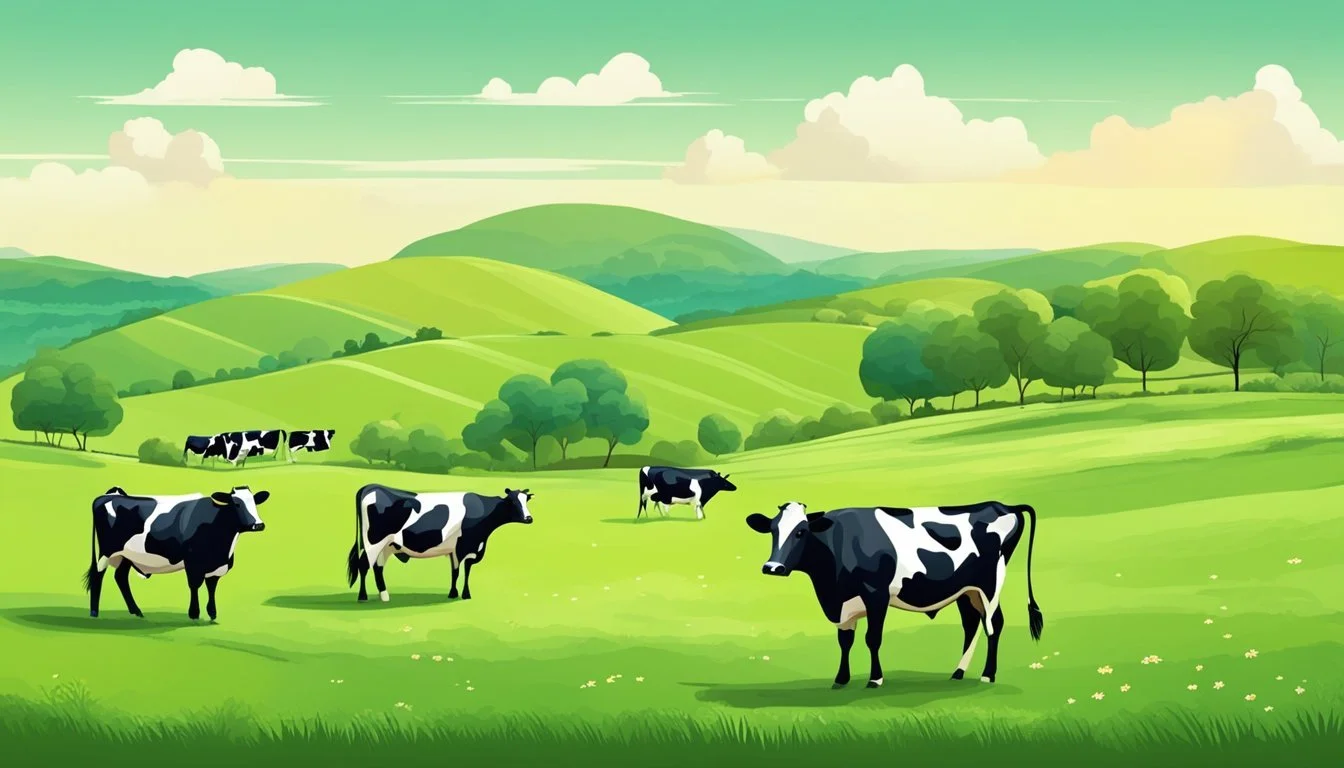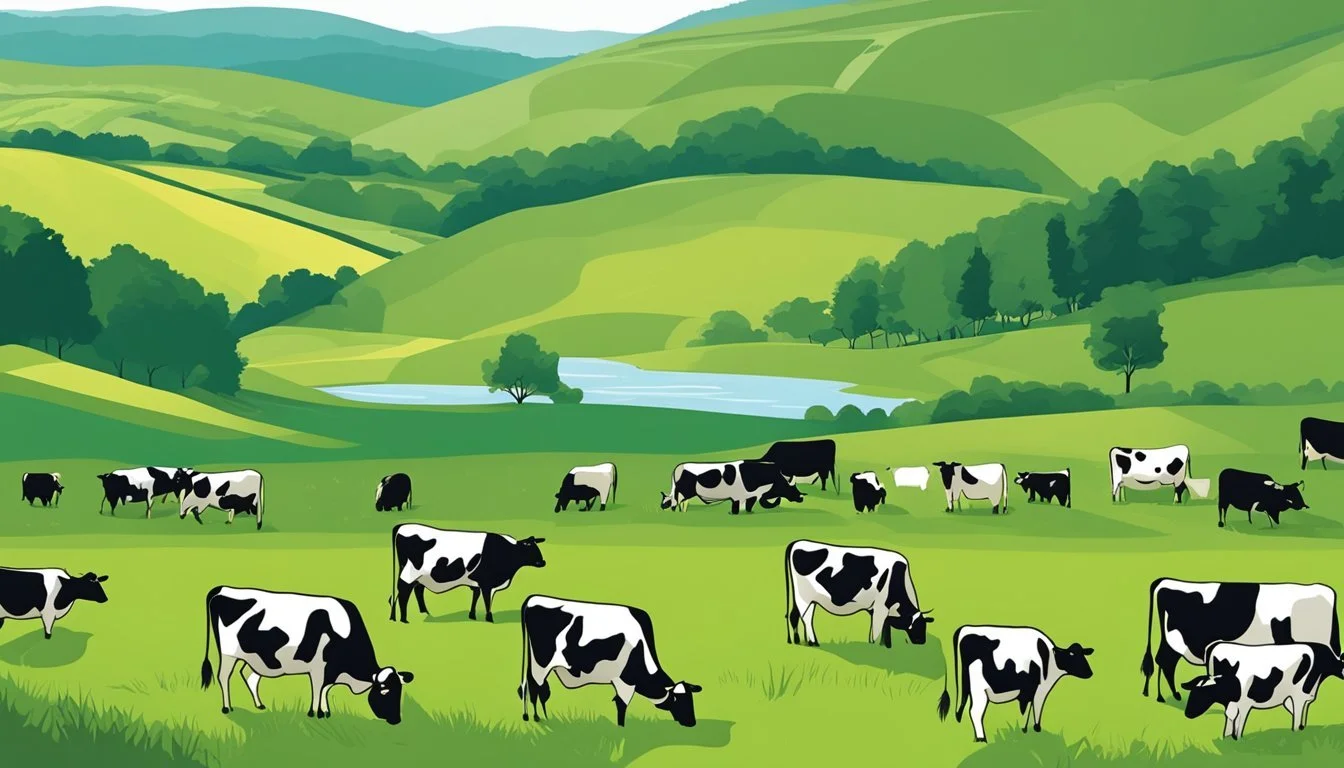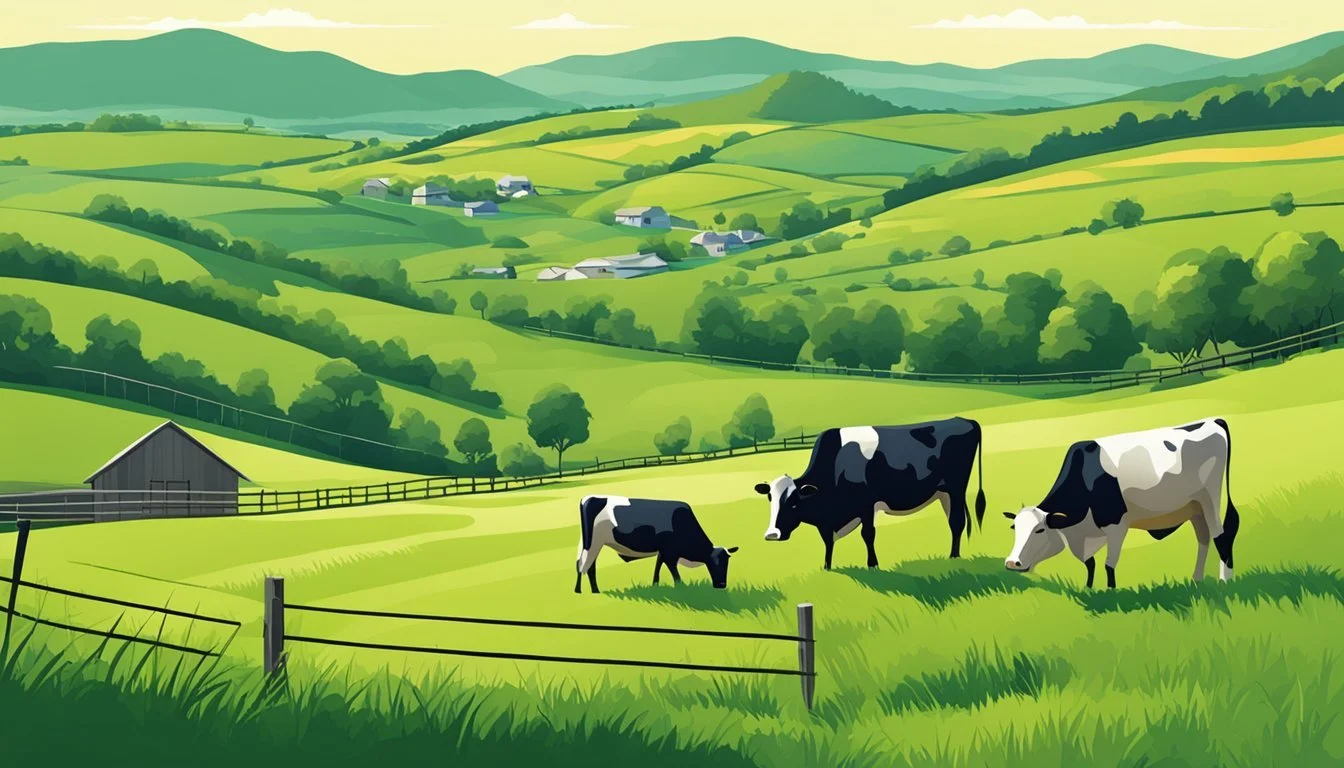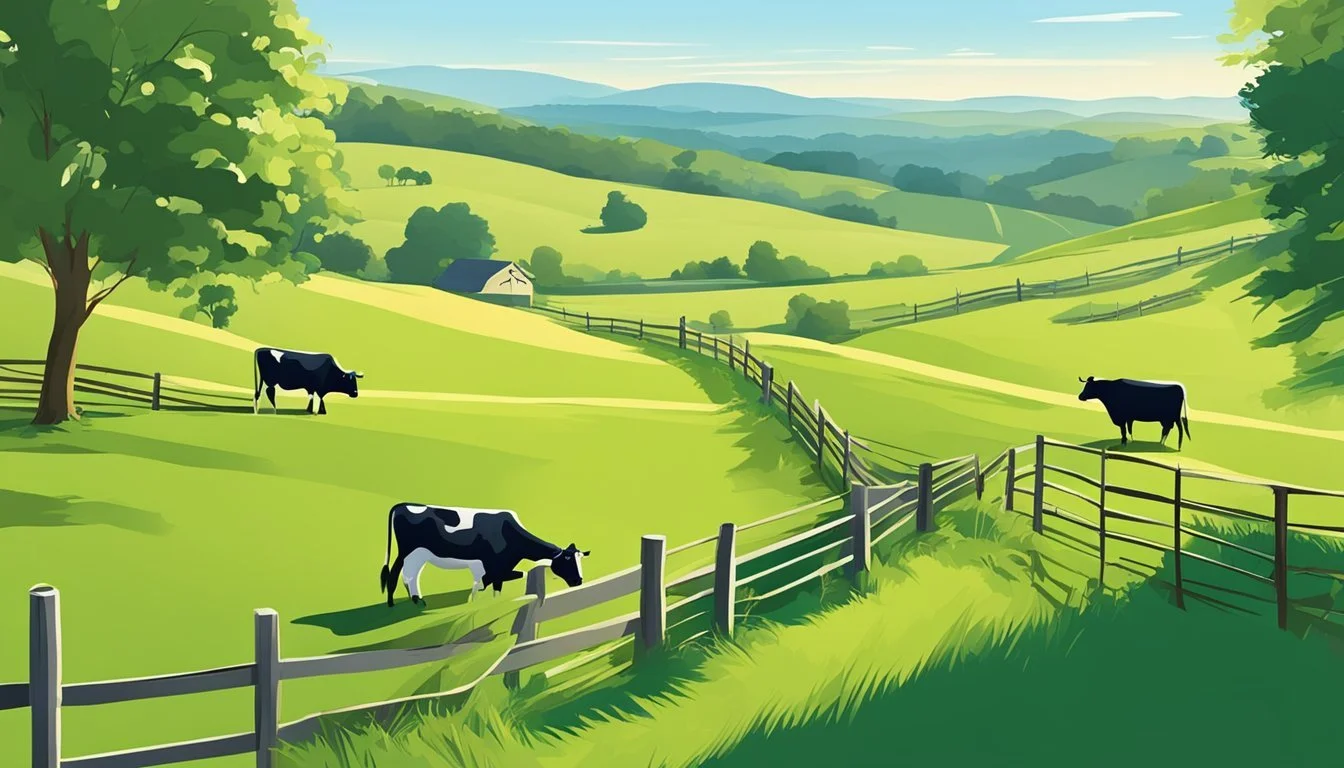Stocking Rate Connecticut
Determining the Optimal Number of Cows Per Acre
Determining the appropriate stocking rate for cattle is a critical component of livestock management in Connecticut. A well-defined stocking rate ensures that land resources are utilized efficiently without being overtaxed, preserving the health of both the pasture and the cattle. Stocking rate, commonly measured in terms of animal units per acre, fundamentally depends on the productive capacity of the land and the size and type of the cattle being grazed.
In Connecticut, the amount of pastureland suitable for grazing plays a significant role in calculating how many cows a property can support. Factors such as forage availability, soil type, climate conditions, and pasture management practices influence the stocking rate. Livestock producers typically aim for a balance that allows cattle to graze throughout the year without needing excessive supplemental feed, while maintaining the quality and sustainability of the pastureland.
It is essential for Connecticut farmers to adjust stocking rates according to the weight and type of cattle, to precisely meet the nutritional demands of their herds and prevent overgrazing. Over 41,000 acres in Connecticut are dedicated to pasture and grazing, underscoring the importance of accurate stocking rates for the viability of the state’s agricultural economy and environmental stewardship. The goal is to optimize livestock production by matching the number of cows per acre to the land's capacity to support them throughout the grazing season.
Understanding Stocking Rates
In the context of livestock management, understanding and calculating precise stocking rates is paramount for sustainable farming in Connecticut.
Defining Stocking Rate
The stocking rate is a measure that indicates the number of livestock the land can support over a certain period. It is usually referred to in terms of Animal Units (AU), with one AU equating to a 1,000-pound cow and her 6-month-old calf. Stocking rates are essential for balancing the forage availability with the livestock's dietary needs, preventing overgrazing and ensuring the long-term health of the pasture.
Importance of Stocking Rate Calculations
Calculating accurate stocking rates is fundamental for sound pasture management. It ensures that the carrying capacity of the property is not exceeded. By determining the appropriate number of animals per acre, farmers can maintain soil quality, forage productivity, and animal health. Failure to adhere to proper stocking rates can lead to resource depletion and reduced livestock productivity.
Stocking Rate Factors
A variety of factors influence the ideal stocking rate. These include:
Forage type and availability: Different plant species and growth rates affect how many animals the land can support.
Animal size and type: Larger animals or those with higher nutritional requirements may reduce the number of AUs per acre.
Climate and weather patterns: Seasonal variations and annual weather conditions can impact forage growth and accessibility.
Management practices: Rotational grazing and pasture improvements can enhance carrying capacity.
Land size and topography: The physical characteristics of the property dictate how much forage is accessible to the livestock.
Using the Animal Unit Month (AUM)—the amount of forage required by an AU for one month—farmers can tailor stocking rates to their specific circumstances. These precise calculations are critical for ensuring that the land can sustainably support the livestock year-round.
Analyzing Property Characteristics
When considering the capacity of a property in Connecticut to support cows, one must assess several critical property characteristics. These factors include pasture quality, soil fertility and composition, terrain types, and local climate, all of which play a significant role in determining the appropriate stocking rate.
Evaluating Pasture Quality
Pasture quality is a primary determinant of how many cows a property can support. High-quality forage yields better nutrition and can sustain more animals. Factors to consider are:
Plant species composition: Desirable species should be dominant.
Plant density and ground cover: A dense sward with minimal bare ground is ideal.
Pasture growth: Regularly monitor growth rates to adjust grazing pressure accordingly.
Soil Analysis and Fertility
Soil fertility directly influences forage production which, in turn, affects the stocking rate. Key soil attributes to examine include:
Nutrient levels: Particularly nitrogen (N), phosphorus (P), and potassium (K).
pH levels: Optimal soil pH is crucial for nutrient uptake by plants.
Organic matter content: This can enhance water retention and soil structure.
Terrain and Forage Types
The topography of the land can impact the number of cows supported. It is essential to consider:
Slope: Steeper slopes can result in increased erosion and reduced grazing areas.
Forage distribution: Uniformity of forage across different terrain types ensures better utilization.
Climate and Precipitation Factors
Climate and precipitation patterns in Connecticut influence forage growth and availability. When analyzing these factors, note the following:
Annual rainfall amounts and distribution: Influences forage growth cycles.
Seasonal variations: Winters can be challenging, with snowfall limiting forage accessibility.
Each of these characteristics must be evaluated individually and collectively to make informed decisions about the stocking rate of cows per acre that a property in Connecticut can sustain.
Calculating Capacity
Calculating the correct livestock capacity of a property is essential for sustainable grazing. This entails understanding animal units per acre, assessing forage supply against demand, and fine-tuning estimates to the specific conditions of Connecticut.
Determining Animal Units Per Acre
An Animal Unit (AU) represents the resource consumption of a standard 1,000-pound cow. For larger or smaller cows, the AU is adjusted proportionately. For instance, a 1,400-pound cow equates to 1.4 AU, while a 3,500-pound cow correlates with 3.5 AU. To ascertain the carrying capacity, one must calculate the number of AUs a property can sustain. In Connecticut, the average cows per acre that a land can support depends on factors such as breed and forage requirements.
Assessing Forage Demand and Supply
The balance between forage demand and forage production determines the stocking rate. Forage demand is the forage consumption necessary to maintain the health and productivity of the livestock, while supply measures the available forage's yield or output. The property's forage production relies on the quality of pasture and the amount of available grazing land. In Connecticut, local climate and soil fertility impact forage yield significantly, influencing how many cows an acre can support.
Forage Demand:
Annual Consumption: An average cow eats about 2.5% of its body weight in forage daily.
Seasonal Variations: Forage demand changes with seasons; winter feedings necessitate additional forage.
Forage Supply:
Annual Yield: Measured in tons per acre, affected by fertilization, irrigation, and pasture management.
Seasonal Growth: Adjustments for slower winter growth are necessary in Connecticut's climate.
Adjusting Calculations for Connecticut
Connecticut-specific considerations impact stocking rates, such as regional weather patterns and forage types. Adjustments must account for winter feed shortages and potential summer droughts which can reduce forage supply. Therefore, managers must incorporate contingency plans and flexibility in their grazing operations. The state's agricultural extension service can provide localized data for more nuanced management plans, ensuring the stocking rates are appropriate for Connecticut's diverse ecosystems.
Forage Management Practices
Effective forage management practices are essential for maintaining a sustainable stocking rate. They ensure optimal forage production, enhance grass and legume health, and reduce overgrazing risks. By applying targeted techniques, landowners can support a reasonable number of cows per acre in Connecticut.
Land Management Techniques
Appropriate land management techniques are critical. Landowners should assess soil fertility regularly and consider soil amendments to promote robust forage growth. The introduction of nitrogen-fixing legumes into pastures benefits soil health and diversifies forage options.
Rotational Grazing Implementation
Rotational grazing is an effective strategy to manage forage and grassland resources. By dividing pastures into smaller areas and rotating livestock through these sections, forage is utilized efficiently. This method allows forage regrowth in resting paddocks, sustaining a consistent feed supply throughout the grazing season.
Improving Forage Production
Maximizing forage production involves selecting high-yield grasses and legumes suited to Connecticut’s climate. Implementing irrigation systems and fertilization schedules can boost forage density and nutritional value. Regularly testing forage quality helps landowners adjust management practices to meet their livestock's nutritional needs.
Mitigating Overgrazing Risks
To mitigate the risks of overgrazing, farmers should monitor pasture utilization closely. Setting a maximum allowable forage removal rate – generally not more than 50% of the current forage – helps maintain plant health and promote rapid regrowth. Farmers should also be prepared to adjust stocking rates based on changing forage conditions and weather patterns.
Livestock Considerations
When determining the stocking rate in Connecticut, one must consider cattle breed choices, the different nutritional demands between dairy and beef cattle, and ways to optimize nutrition to support livestock health and productivity.
Selecting Cattle Breeds
The efficiency of a livestock operation begins with selecting the appropriate breeds. In Connecticut, breeds must be chosen based on their adaptability to the climate and their role in the production system. For example, Angus and Hereford breeds are known for their beef production qualities, whereas breeds like Holstein and Jersey are preferred for dairy production due to their high milk yields.
Understanding Dairy Versus Beef Requirements
The nutritional needs of dairy and beef cattle differ significantly, impacting stocking rate decisions. Dairy cattle require diets high in protein and energy to maximize milk production. In contrast, beef cattle focus on weight gain, requiring a diet that might include grain-based feeds to improve growth efficiency. The property's forage availability must match these specific requirements to support the respective cattle.
Optimizing Livestock Nutrition
Adequate nutrition is vital for the health and productivity of cattle. It includes a balance of forages, grains, and nutritional supplements. Forages should make up the majority of the diet, but supplementing with protein-rich feeds or minerals can be necessary, especially when forage quality is low. A typical strategy might involve:
Forage: Primary diet component, varies by season.
Grains: To supplement energy intake if necessary.
Protein Supplements: Ensures adequate protein levels.
Minerals: Balanced mineral intake is critical.
In Connecticut, the goal is to provide a nutrition plan that supports the desired production outcomes without overburdening the land with too many livestock, ensuring sustainability and profitability.
Sustainable Practices
Sustainable livestock farming in Connecticut involves a balance between maintaining productivity and preserving the environment. This balance is achieved through thoughtful grazing management, soil health promotion, and pasture rotation practices.
Grazing Management and Sustainability
Effective grazing management fosters sustainability by optimizing grazing intensity and efficiency. Farmers should assess grazing season length and adjust livestock density accordingly to prevent overgrazing. They can implement a rotational grazing system, which allows pastures time to recover, leading to improved forage production and reduced soil compaction.
Key actions include:
Monitoring grazing pressure to maintain vegetation cover and avoid overgrazing.
Adjusting stocking rates to account for variable factors such as forage availability and animal weight.
Promoting Soil Health
Soil quality is a critical component of sustainability. Management practices that promote soil health contribute to the long-term viability of farmland.
To promote soil health:
Apply organic matter to enhance soil structure and nutrient availability.
Avoid overstocking, which can lead to soil compaction and erosion.
Pasture Rotation and Recovery
Rotational grazing allows pastures to recover and supports sustained production. Recovery periods should be adapted to growth rates, ensuring pastures are not re-grazed until they have sufficiently recovered.
Considerations for pasture rotation:
Plan rotation schedules that align with plant growth cycles.
Practice rest-rotation grazing, leaving pastures fallow during slow growth periods for full recovery.
Additional Resources
The following resources provide livestock owners with tools and information to help determine the appropriate stocking rate for cows in Connecticut. They cover federal guidelines, the importance of meticulous record keeping, and local laws and resources essential for responsible livestock production.
Understanding USDA Guidelines
The USDA Economic Research Service serves as a vital resource for farmers looking to align their stocking rates with federal guidelines. It provides detailed reports and analysis on forage availability, livestock productivity, and land management practices. Farmers can use these resources to inform their decisions regarding how many cows their acreage can support.
Record Keeping and Monitoring
Effective record keeping is crucial for any successful livestock operation. Farmers should maintain accurate records on pasture conditions, cattle health, and forage consumption. These records help predict forage needs and adjust stocking rates accordingly. Tools like the USDA's farm management software can aid farmers in monitoring their herds and pastures effectively.
Local Regulations and Resources
It is important for farmers in Connecticut to familiarize themselves with local zoning regulations which can impact the number of animals allowed per acre. State and county agriculture extension offices are invaluable resources, providing region-specific guidance and education on sustainable livestock management. They also help farmers understand and comply with state regulations to avoid potential legal issues.
Conclusion
In Connecticut, the determination of how many cows a property can support per acre depends on several factors, including forage production, land management, and the nutritional needs of the livestock. It's important to assess the land's carrying capacity accurately to prevent overgrazing, soil degradation, and to ensure the health and welfare of the cattle.
Data from similar regions suggest an average of 1.5 to 2 acres per cow is a reasonable starting point. However, specific local conditions like soil fertility, forage type, and climate variations must be considered for more precise calculations.
Property owners are advised to perform a detailed analysis of their land and consult with local agricultural extension services to establish a tailored stocking rate. Additionally, continuous monitoring of pasture health and flexibility in managing stock numbers according to changing conditions are critical for sustainable livestock production.
Implementing a rotational grazing system may enhance forage utilization and can allow for a potentially higher stocking rate by preventing overuse of a single area. Adequate fencing, water supply, and pasture recovery time are key components of such a system.
Lastly, integration of current best practices along with personalized consultation will yield the best results for Connecticut livestock producers aiming to balance productivity with environmental stewardship.







